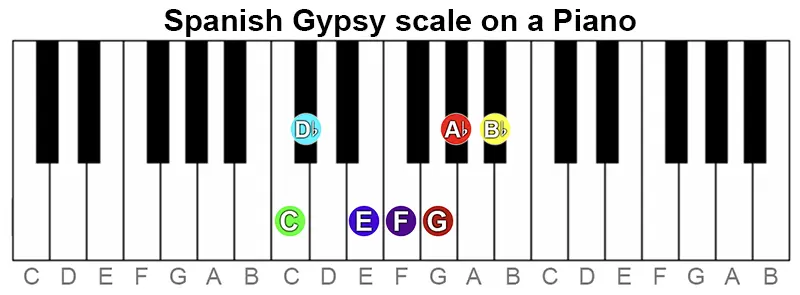What are scales?
Scales are a way of sorting pitches into groups giving the set of pitches a unique characteristic when played together. Certain formulas are use, along with music notes, to determine which pitch belongs to which scale. Here you’ll learn about the Chromatic scale and the different formulas that are use to build Diatonic scales, Pentatonic scales, Blues scales and even Spanish Gypsy scales.
Chromatic scale
The chromatic scale is a 12 notes per octave set of pitches. Each note being a semitone interval apart from one to the next.
The Chromatic scale has an Interval of: St – St – St – St – St – St – St – St – St – St – St – St
The notes that make up the Chromatic scale are: C – C♯ – D – D♯ – E – F – F♯ – G – G♯ – A – A♯ – B – C
Chromatic scale on a Treble Cleft
The diagram below is what the Chromatic scale looks like on a Treble Clef using sharps(♯) and flats(♭) as each use case is slightly different. Some notes that have the same pitch are actually positioned different depending on whether a composition is using sharps or flats.
Example: The C♯ and the D♭ note represent the same pitch however the whole note symbol written as C♯ is positioned on the “C” line if the staff and the D♭ is positioned on the “D” line of the staff.
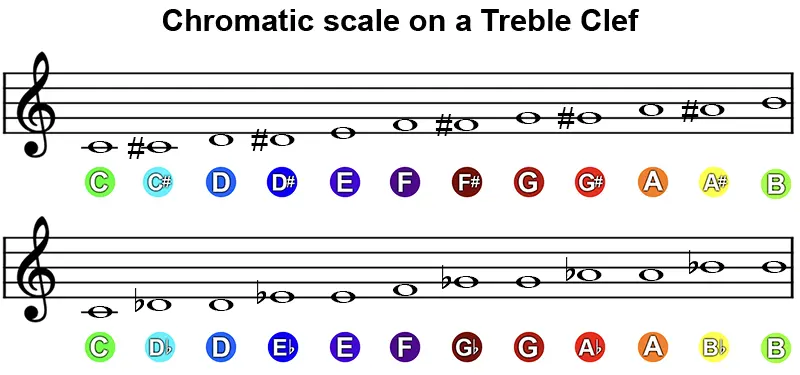
Chromatic scale on a Piano
On a Piano an octave consist of 12 white and black keys. Each note of the Chromatic scale are assigned to these keys. Memorizing the notes on a Piano keyboard will not only help you navigate through the keys on a Piano but also help you understand other scales such as the Diatonic scale.
Things to notice about the Piano diagram below:
- The white keys are assigned natural notes (C – D – E – F – G – A – B).
- The black keys are assigned accented notes (C♯/D♭ – D♯/E♭ – F♯/G♭ – G♯/A♭ – A♯/B♭).
- The accented notes can be written using either sharp or flats and produce the same pitch.
- Some white keys can also be written as either natural or with sharps and flats. (C/B♯ – E/F♭ – F/E♯ – B/C♭)
The diagram below will help you see which notes of the Chromatic scale are white keys and which notes are black keys.
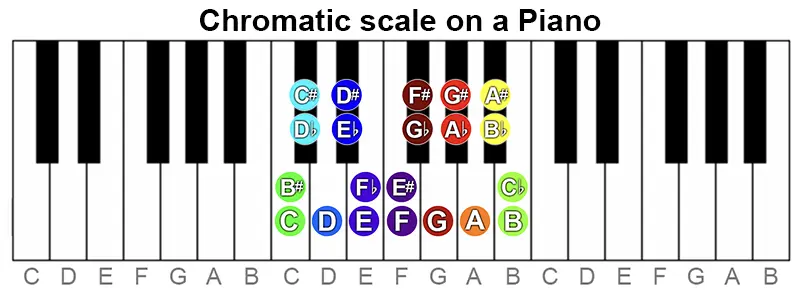
The chromatic scale is the most fundamental scale of them all because the rest of the following scales are built from this scale.
Diatonic scale
The Diatonic scale is a 7 notes per octave scale. In order for a group of notes to be considered a Diatonic scale, specifically a Major Diatonic scale, the distance between notes must follow this interval: T – T – St – T – T – T – St.
The reason why it’s called a “Major” scale is because if you build a triad chord with the key note “C” you get a “C Major chord.” More about chords in the next lesson.
Steps on how to build a Major Diatonic scale:
- Choose a key (In this case we are using “C”) and apply this interval: T – T – St – T – T – T – St.
- Starting from C, the 2nd note in this scale will have to be a Tone above C. A Tone above C is D
- Then go another Tone up from D and you get E
- Next interval is a Semitone and if you go up a Semitone above E you get F
- Appling this interval further will get you the rest if the 7 notes
- If applied correctly the notes you get are C – D – E – F – G – A – B and back to C
C Major scale on a Piano
The notes of C Major scale are all white keys on a Piano.
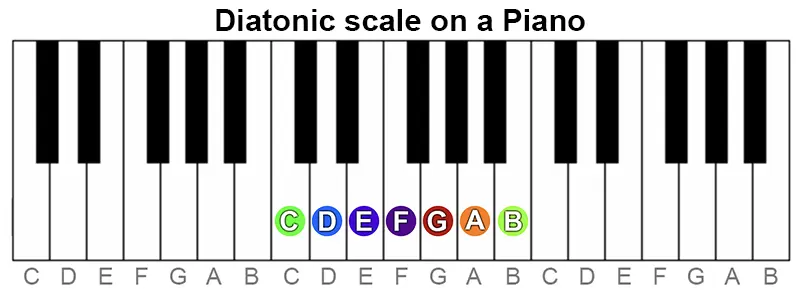
Pentatonic scale
Pentatonic scale on a Piano
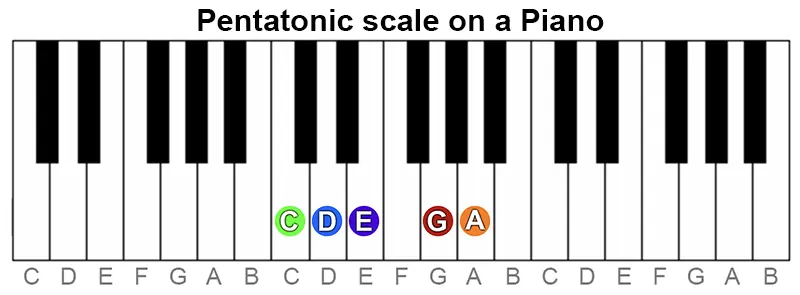
Blues scale
Blues scale on a Piano
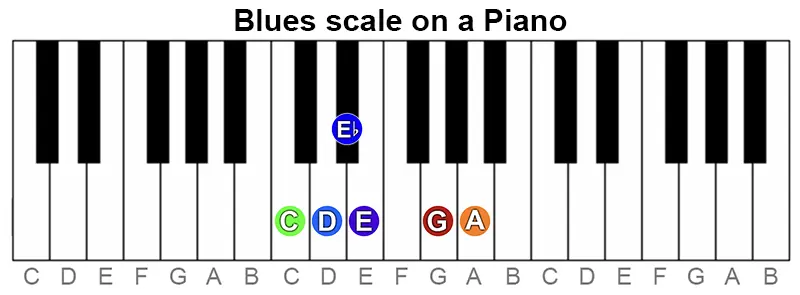
Spanish Gypsy scale
Spanish Gypsy scale on a Piano
